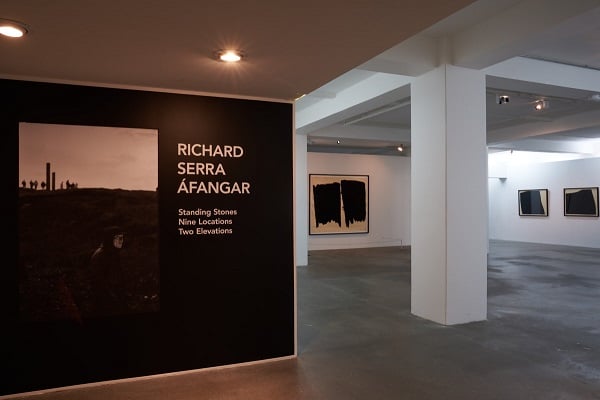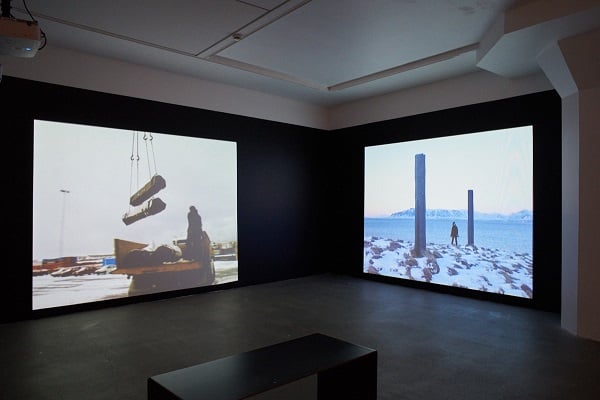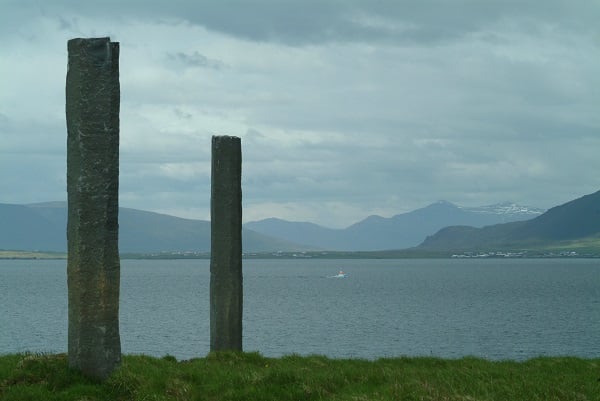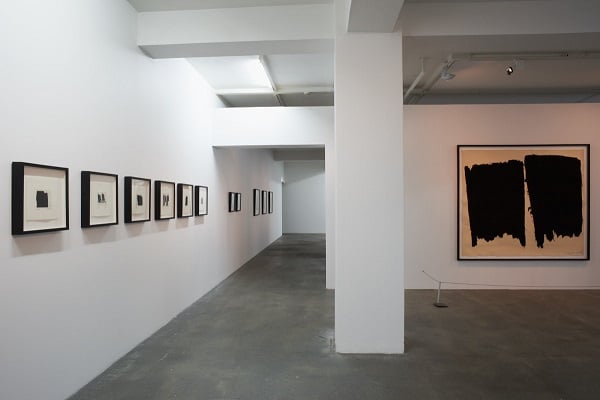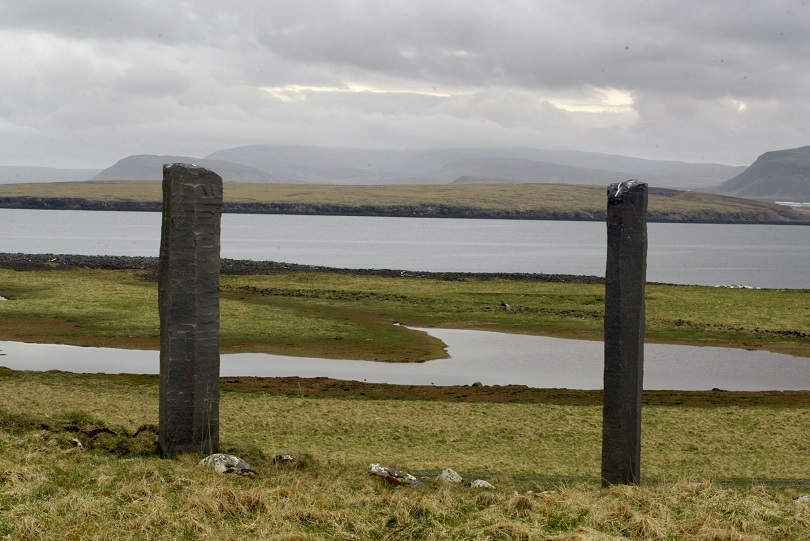
Art in Iceland: Richard Serra’s Áfangar
Reykjavík Art Museum is currently showing an exhibition of Richard Serra’s work to mark 25 years since the creation of Áfangar, his site-specific sculpture that encompasses Vesturey, the western part of Viðey Island, off the coast of Reykjavík, Iceland.
The exhibition is displayed at Hafnarhús, one of Reykjavík Art Museum’s three distinct buildings in central Reykjavik. It comprises drawings and prints produced by Serra in connection with Áfangar, along with videos of the installation of the work and an interview with the artist.
Áfangar was created in response to an invitation Serra received in 1988 from the National Gallery of Iceland and sculptors union to build a work for the city of Reykjavík or the museum. Upon his arrival, however, Serra was struck by the stark, immense vastness of the landscape, radically different and varied in its proportions.[i] He expressed interest in working in the landscape and took it upon himself to explore Viðey, which inspired his proposal for the sculpture.
Áfangar is inherently connected to its environment. It is both of the landscape – at one with its surroundings – and acts to aesthetically frame the landscape, such that the surrounding environment is perceived by the viewer in terms of the work itself. The sculpture is formed of eighteen basalt columns, standing in pairs around Vesturey’s rugged coastline. Each pair is composed of one three-metre-high column – its base at an altitude of ten metres above sea level – and another measuring four metres with its base at an altitude of nine metres. The top of each column therefore is level with all the rest at an elevation of thirteen metres. The island’s topography determines the space between each pair of columns: in steep terrain the columns are placed in close proximity, while at more gradual inclines the pairs sit further apart. Amidst the expansive landscape and surrounding harbour, the columns are particularly striking – their vertical forms without competition.
Basalt, the material chosen by Serra for Áfangar, is an igneous rock formed by the rapid cooling of basaltic lava. It is inherently connected to the geological history of Viðey, which was an active volcano two million years ago. Found naturally in modular forms, the sculpture’s material echoes the dramatic rock formations along Viðey’s coastline. Although indigenous to the site, the stones could not be sourced directly due to preservation regulations and were accordingly brought to the island.[i] The eighteen pieces were selected by Serra and then cut to the required lengths of three and four metres.[ii]
The exhibition at Hafnarhús features numerous drawings and etchings, emanating from the creation of Áfangar. The works range in size from intimate drawings and etchings, to substantial prints on vast sheets requiring almost a pound of ink per impression. In an interview with Mark Rosenthal, the artist elucidated the relationship between Áfangar and the works on paper:
The etchings are not illustrations or depictions of the sculpture. The experience of building the sculpture acted as a catalyst that led to separate activities like etching and drawing. Work generates different kinds of work.[iii]
The works on paper act as a meditation on the philosophical concepts underpinning Serra’s work. They are produced with the same intentionality as his sculptures, capturing the sense of materiality and physicality inherent to his practice. The etchings have an extremely dense surface, produced by a very deep bite into a thick plate: the pebbled ink impression seemingly echoes the texture and solidity of the basalt.[iv]
In these monochromatic works, black may be perceived as a solid form or mass, or alternatively as a void or empty space. In this way, the works on paper act as a two dimensional exploration of ideas that play out in Serra’s sculptures. His sculptures are arrangements of space in which the viewer moves, rather than objects to be inspected by the viewer.[i] Accordingly, the negative space – the void – is of equal importance to the sculptural form itself. Áfangar exemplifies this element fundamental to Serra’s work.
The notion of movement is captured by its title, an Icelandic word that translates as a stage or leg of a journey, between one stopping-place and the next. Accordingly, the work can only be truly ‘perceived’ by the viewer over time: one must walk around Vesturey, moving between the pairs of basalt columns, seeing their texture up close and from afar, viewing the landscape, harbour and outlook to the mainland in terms of the paired columns.
Richard Serra: Áfangar is showing until 20 September at Reykjavík Art Museum. Áfangar is permanently installed on Viðey Island, which can be reached by ferry departing from Reykjavík. For those based in London who cannot make it to Iceland, Richard Serra’s site-specific work Fulcrum (1987) stands near Liverpool Street Station.
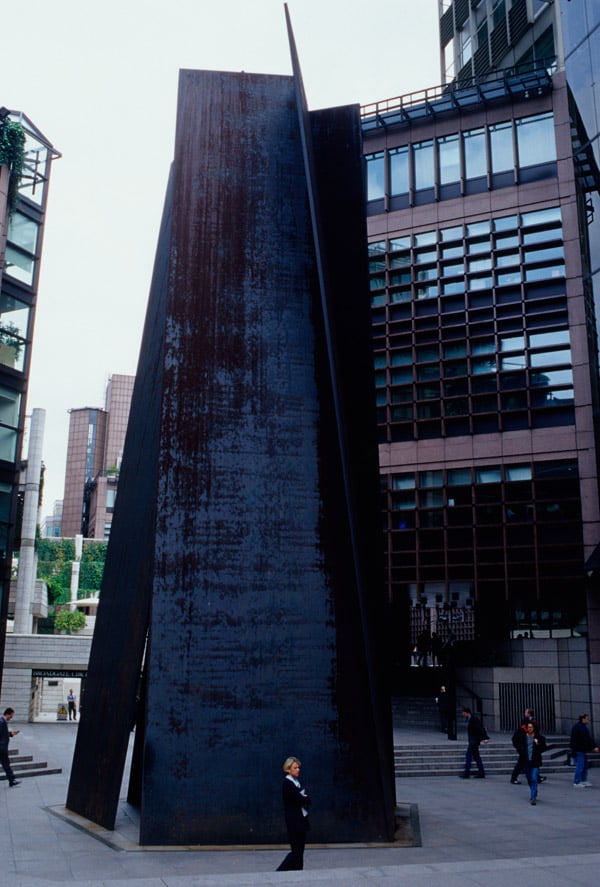
View of ‘Fulcrum’, free-standing sculpture by Richard Serra (b.1939) near Liverpool Street Station, constructed in 1987 / London, UK / © Historic England
Sources [i] ‘Interview, Mark Rosenthal’ in Writings/Interviews by Richard Serra, published by The University of Chicago Press, Chicago, London, 1994, pp. 247–8.
[ii] ‘Thinking on your feet: Richard Serra’s sculptures in landscape’ by Lynne Cooke in Richard Serra Sculpture: Forty Years, published by the Museum of Modern Art, New York, 2007, p.96.
[iii] ‘Interview, Mark Rosenthal’, p. 248.
[iv] Ibid., p. 250.
[v] ‘Black velvet’ by Kay Larson in New York Magazine, published 13 Apr 1992, p. 72.
[vi] ‘Serra’s Abstract Thinking’ by John Rajchman in Richard Serra Sculpture: Forty Years, p. 61.
Images for Licensing
View nearly 40 artworks by Richard Serra on the Bridgeman website, available for licensing. Get in touch with the Bridgeman team on uksales@bridgemanimages.com with enquires about licensing and clearing copyright
Save

